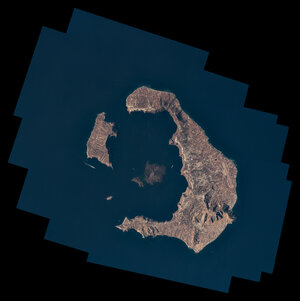Accept all cookies Accept only essential cookies See our Cookie Notice

About ESA
The European Space Agency (ESA) is Europe’s gateway to space. Its mission is to shape the development of Europe’s space capability and ensure that investment in space continues to deliver benefits to the citizens of Europe and the world.
Highlights
ESA - United space in Europe
This is ESA ESA facts Member States & Cooperating States Funding Director General Top management For Member State Delegations European vision European Space Policy ESA & EU Space Councils Responsibility & Sustainability Annual Report Calendar of meetings Corporate newsEstablishments & sites
ESA Headquarters ESA ESTEC ESA ESOC ESA ESRIN ESA EAC ESA ESAC Europe's Spaceport ESA ESEC ESA ECSAT Brussels Office Washington OfficeWorking with ESA
Business with ESA ESA Commercialisation Gateway Law at ESA Careers Cyber resilience at ESA IT at ESA Newsroom Partnerships Merchandising Licence Education Open Space Innovation Platform Integrity and Reporting Administrative Tribunal Health and SafetyMore about ESA
History ESA Historical Archives Exhibitions Publications Art & Culture ESA Merchandise Kids Diversity ESA Brand Centre ESA ChampionsLatest
Space in Member States
Find out more about space activities in our 23 Member States, and understand how ESA works together with their national agencies, institutions and organisations.
Science & Exploration
Exploring our Solar System and unlocking the secrets of the Universe
Go to topicAstronauts
Missions
Juice Euclid Webb Solar Orbiter BepiColombo Gaia ExoMars Cheops Exoplanet missions More missionsActivities
International Space Station Orion service module Gateway Concordia Caves & Pangaea BenefitsLatest
Space Safety
Protecting life and infrastructure on Earth and in orbit
Go to topicAsteroids
Asteroids and Planetary Defence Asteroid danger explained Flyeye telescope: asteroid detection Hera mission: asteroid deflection Near-Earth Object Coordination CentreSpace junk
About space debris Space debris by the numbers Space Environment Report In space refuelling, refurbishing and removingSafety from space
Clean Space ecodesign Zero Debris Technologies Space for Earth Supporting Sustainable DevelopmentLatest
Applications
Using space to benefit citizens and meet future challenges on Earth
Go to topicObserving the Earth
Observing the Earth Future EO Copernicus Meteorology Space for our climate Satellite missionsCommercialisation
ESA Commercialisation Gateway Open Space Innovation Platform Business Incubation ESA Space SolutionsLatest
Enabling & Support
Making space accessible and developing the technologies for the future
Go to topicBuilding missions
Space Engineering and Technology Test centre Laboratories Concurrent Design Facility Preparing for the future Shaping the Future Discovery and Preparation Advanced Concepts TeamSpace transportation
Space Transportation Ariane Vega Space Rider Future space transportation Boost! Europe's Spaceport Launches from Europe's Spaceport from 2012
Space Station stitch
Thank you for liking
You have already liked this page, you can only like it once!
This panorama of the International Space Station is a wider view of what ESA astronaut Luca Parmitano was capturing on camera during the first of a series of historic spacewalks that took place in November 2019.
Author, journalist and researcher Lee Brandon-Cremer created this photo by stitching together three images taken by Luca as he made his way to the worksite during the first Extravehicular Activity or EVA to service the Alpha Magnetic Spectrometer (AMS), the Station’s dark matter detector.
"For every spacewalk there are thousands of images taken. Sometimes a few images jump out at me,” he explains. “One day I realised I could stitch these images together to expand the scene and show what the astronaut sees in a broader sense.”
To create this view, Lee first went looking for images with common points. This proved tricky: of the 1000 or so images he scanned, he found three that could be worked into two expanded photos of the Space Station.
He then joined and lightly edited the images to create a smooth photograph, a technique referred to as “stitching”.
In the final image you can see the white panel radiators that keep the Space Station cool. The spacecraft on the left is a Soyuz. On the right is the Kibo module, with Japanese flag visible. The Space Station is flying to the right in this picture.
Nowadays we are spoiled for space imagery. From satellites circling the Earth and spacecraft taking selfies to astronaut snaps from the International Space Station, there is no shortage of photographs at which to marvel – and they are easy to access.
Aside from the critical role these images play in aiding scientific studies of Earth, the Solar System and outer space, they are important tools for science communication and public engagement.
One advantage of space imagery made public is how it engages citizen scientists and students all over the world. Take two projects as examples:
Cities at Night asks residents to identify major cities at night as seen by astronauts from the Space Station to help map out and combat light pollution. The Climate Detectives school project tasks students with investigating a local climate problem and proposing a solution by studying Earth observation satellite imagery.
For others like Lee, the images are a source of inspiration and creativity.
“It’s truly thrilling for me to recreate these broader views and it makes me wonder how many more unique views like this one captured by Luca are hiding in space agency archives,” Lee adds.
Download the high resolution image in the link above.
-
CREDIT
L. Brandon-Cremer -
LICENCE
ESA Standard Licence

Santorini stitched

Make a wish! Alexander’s first timelapse from space

London linked together

Bouncing Sun















 Germany
Germany
 Austria
Austria
 Belgium
Belgium
 Denmark
Denmark
 Spain
Spain
 Estonia
Estonia
 Finland
Finland
 France
France
 Greece
Greece
 Hungary
Hungary
 Ireland
Ireland
 Italy
Italy
 Luxembourg
Luxembourg
 Norway
Norway
 The Netherlands
The Netherlands
 Poland
Poland
 Portugal
Portugal
 Czechia
Czechia
 Romania
Romania
 United Kingdom
United Kingdom
 Slovenia
Slovenia
 Sweden
Sweden
 Switzerland
Switzerland
























